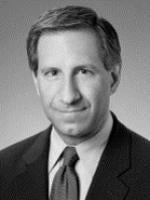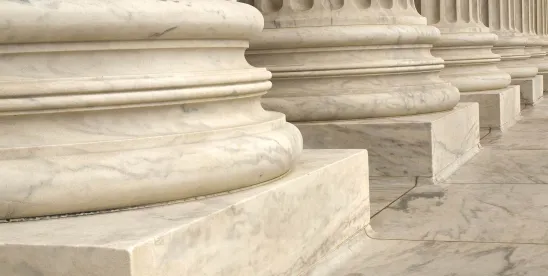In Macquarie Infrastructure Corp. v. Moab Partners, No. 22-1165, 2024 WL 1588706 (U.S. Apr. 12, 2024) (“MIC”), the United States Supreme Court (Sotomayor, J.) held unanimously that “pure omissions” in a Securities and Exchange Commission (“SEC”) filing do not support liability under SEC Rule 10b-5(b). The Court ruled that the failure to make a required disclosure can give rise to a Rule 10b-5(b) claim only if the non-disclosure renders affirmative “statements made” misleading. Put differently, if a company elects to speak, it must tell the whole truth (or at least “information necessary to ensure that the [affirmative] statements made are clear and complete”); but a company’s silence on an issue is not securities fraud under Rule 10b-5(b), even if the company is otherwise duty-bound to disclose.
The facts in this case are straightforward. According to the plaintiff-shareholders’ complaint: MIC owns a subsidiary that operates terminals which store bulk liquid commodities, including No. 6 fuel oil. No. 6 fuel oil constituted a large portion (40%) of MIC’s subsidiary’s storage capacity. In 2016, the United Nations (“UN”) International Maritime Organization adopted IMO 2020, which capped the sulfur content of fuel oil used in shipping at 0.5%. No. 6 fuel oil typically has a sulfur content that exceeds this threshold. MIC did not disclose IMO 2020 or its potential implications in public offering documents. In February 2018, MIC announced that its subsidiary’s storage customers had decreased due in part to the decline in the No. 6 fuel market. MIC’s stock price fell.
The plaintiff-shareholders sued MIC and its directors and officers under SEC Rule 10b-5(b), alleging that MIC failed to disclose that its subsidiary’s “single largest product . . . faced a near-cataclysmic ban” by the UN. The crux of the complaint was that MIC allegedly had a duty to disclose IMO 2020 and the likely impact on its bottom line under Item 303 of Regulation S-K, 17 C.F.R. § 229.303(b)(2)(ii), which requires companies to disclose “known trends or uncertainties that have had or that are reasonably likely to have a material favorable or unfavorable impact on net sales or revenues or income from continuing operations.” The plaintiff-shareholders alleged that MIC failed to make this disclosure in its public offering filings in violation of Rule 10b-5(b), “which makes it unlawful to omit material facts in connection with buying or selling securities when the omission renders ‘statements made’ misleading.”
The United States District Court for the Southern District of New York dismissed the complaint, concluding that the plaintiff-shareholders did not “actually plead an uncertainty that should have been disclosed” under Item 303 (i.e., there was no predicate Item 303 violation). City of Riviera Beach Gen. Employees Retirement System v. Macquarie Infrastructure Corp., No. 18-CV-3608 (VSB), 2021 WL 4084572 (S.D.N.Y. Sept. 7, 2021). The United States Court of Appeals for the Second Circuit reversed, holding that the plaintiff-shareholders adequately pled an undisclosed “uncertainty” in violation of Item 303, and MIC’s Item 303 violation alone could sustain a Rule 10b-5(b) claim. Moab Partners, L.P. v. Macquarie Infrastructure Corp., No. 21-2524, 2022 WL 17815767 (2d Cir. Dec. 20, 2022).
The Supreme Court reversed and vacated the Second Circuit’s judgment. In doing so, it resolved a circuit split on the question of whether the failure to make a disclosure required by Item 303 supports a Rule 10b-5(b) claim in the absence of an otherwise misleading statement. Before MIC, the Second Circuit answered “yes.” See Stratte-McClure v. Morgan Stanley, 776 F.3d 94 (2d Cir. 2015). The Third, Ninth and Eleventh Circuits, on the other hand, held the opposite: an Item 303 violation cannot, standing alone, support a Rule 10b-5(b) claim. See Oran v. Stafford, 226 F.3d 275 (3d Cir. 2000); In re NVIDIA Sec. Litig., 768 F.3d 1046 (9th Cir. 2014); Carvelli v. Ocwen Fin. Corp., 934 F.3d 1307, 1331 (11th Cir. 2019).
The Supreme Court sided with the Third, Ninth and Eleventh Circuits, overturning contrary Second Circuit precedent: “Rule 10b-5(b) does not proscribe pure omissions.” The Court reasoned that Rule 10b-5(b), by its plain language, only “requires disclosure of information necessary to ensure that statements already made are clear and complete” (emphasis added). In other words, Rule 10b-5(b)’s proscription on material omissions only “covers half-truths, not pure omissions.” Half-truths are “representations that state the truth only so far as it goes, while omitting critical qualifying information.” Pure omissions, in contrast, “occur[] when a speaker says nothing, in circumstances that do not give any particular meaning to silence.” The former are actionable under Rule 10b-5(b), while the latter are not. The Supreme Court held that MIC’s mere act of filing a document with the SEC that was silent on IMO 2020, without more, falls into the “pure omission” category and thus is not actionable under Rule 10b-5(b).
Where do material omission claims stand post-MIC? Here are three key takeaways:
First, it is now clear that “pure omissions,” standing alone, cannot give rise to a Rule 10b-5(b) claim. Plaintiffs cannot seek to impose Rule 10b-5(b) liability on companies and their directors and officers any time they can point to a “trend” or “uncertainty” they claim was known and should have been disclosed under Item 303. As the Court explained, “[s]ilence, absent a duty to disclose, is not misleading under Rule 10b–5. Basic Inc. v. Levinson, 485 U.S. 224, 239, n. 17 (1988). Even a duty to disclose, however, does not automatically render silence misleading under Rule 10b–5(b).”
Second, to state a Rule 10b-5(b) claim based upon an alleged material omission, plaintiffs must point to an affirmative “half-truth” in a public filing or statement. Importantly, however, the Supreme Court left open the question of what constitutes an actionable “half-truth” under Rule 10b-5(b): “The Court does not opine on . . . when a statement is misleading as a half-truth.” Accordingly, how related the alleged undisclosed information must be to a “statement made” to rise to the level of a “material omission” remains to be seen. Plaintiffs are very likely to test the waters here, and assert that “statements made” in SEC filings (no matter how tangential) are rendered misleading by a mandated disclosure.
Lastly, “pure omissions” remain actionable under other rules and regulations. Although the Court in MIC declined to opine on whether the other two subsections of Rule 10b-5 — Rules 10b-5(a) and 10b-5(c) — may support liability for pure omissions, in Affiliated Ute Citizens of Utah v. United States, 406 U.S. 128 (1972), the Supreme Court held that a failure by defendants to disclose that “they were in a position to gain financially” from stock sales even though they “may have made no positive representation or recommendation” could support liability under subsections (a) and (c) of Rule 10b-5. Moreover, Section 11(a) of the Securities Act of 1933, 15 U.S.C. § 77k(a), prohibits any registration statement that “omit[s] to state a material fact required to be stated therein.” Thus, unlike Rule 10b-5(b), Section 11(a) does prohibit pure omissions (at least in registration statements). In addition, the SEC always retains the authority to pursue claims for a company’s failure to disclose information pursuant to Item 303. Publicly traded companies must, therefore, still be wary of liability stemming from a failure to disclose post-MIC.




 />i
/>i
